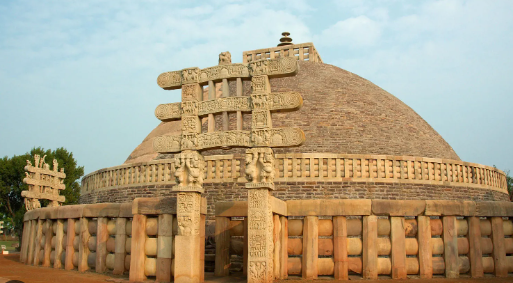[ad_1]
New Delhi: On Thursday evening, Tamil Nadu Governor R.N. Ravi announced Dravida Munnetra Kazhagam (DMK) leader V. Senthil Balaji’s dismissal from the state council of ministers. The move not only put him on the warpath with the state’s DMK government, but also led to Constitutional questions, the chief among them being whether the governor had overstepped his authority.
The Governor eventually put his decision in abeyance, telling Chief Minister M.K. Stalin in a letter that he had been advised by Union Home Minister Amit Shah to seek the attorney general’s opinion on the matter.
Around 7:30 pm Thursday, the Tamil Nadu Raj Bhavan had issued a statement saying Balaji’s arrest by the Enforcement Directorate (ED) in an alleged cash-for-jobs scam was the reason for his dismissal. The statement said the minister was “facing serious criminal proceedings in a number of cases of corruption, including taking cash for jobs and money laundering”.
Balaji was arrested by the federal investigation agency in the early hours of 14 June, after 18 hours of questioning. The ED accuses Senthil of misusing his office and engineering a job racket scam in the state transport undertakings in 2014-15, when he was transport minister in the then All India Anna Dravida Munnetra Kazhagam (AIADMK) government in the state.
Before his arrest this month, Balaji was minister of electricity, prohibition and excise minister in the DMK government. Following his arrest, his responsibilities were reassigned, and he remains a ‘minister without portfolio’.
Reacting to the minister’s dismissal order Thursday, Chief Minister M.K. Stalin had said Ravi had “no power” to dismiss his minister. “We will face this legally,” Stalin had said in an official reaction.
Ravi’s decision to suspend Balaji raised several questions on the limits on the powers of the governor — an issue that remains controversial in India and has often ended up in the Supreme Court.
Here’s what the Constitution of India says about the powers of the governor and what successive Supreme Court verdicts held on one of India’s most contentious questions.
What the Constitution says
Article 164 of the Constitution says that the governor will appoint the chief minister, and that the other ministers will be appointed by him on the advice of the latter. The ministers, it says, will hold office during the “pleasure of the Governor”.
Additionally, Article 163 of the Constitution requires the governor to act on the “aid and advise” of the council of ministers, headed by the chief minister of the state.
But the provision also adds the governor would not need this advice if the Constitution requires him to carry out any function at his discretion.
The Supreme Court usually reads these provisions together to outline the powers of governors — primarily to explain when they need to act on the advice of the council of ministers and when they can use their discretion.
What ‘discretion’ means
It was in the landmark Shamsher Singh & Anr vs State Of Punjab in 1974 that the Supreme Court had reportedly elaborated on the ‘discretionary’ powers of the President of India and the governors.
“…the President and Governor, custodians of all executive and other powers under various Articles, shall, by virtue of these provisions, exercise their formal constitutional powers only upon and in accordance with the advice of their Ministers save in a few well-known exceptional situations”, the court had ruled.
The ruling also enumerated these exceptions: “a) the choice of Prime Minister (Chief Minister), restricted though this choice is by the paramount consideration that he should command a majority in the House; b) the dismissal of a Government which has lost its majority in the House but refuses to quit office; c) the dissolution of the House where an appeal to the country is necessarily [sic], although in this area the Head of State should avoid getting involved in politics and must be advised by his Prime Minister (Chief Minister) who will eventually take the responsibility for the step [sic]”.
Simply put, the governor’s discretion can be exercised in cases where the governor has reasons to believe that the chief minister and his/her council of ministers have lost the confidence of the House, or when the government has lost its majority but refuses to quit office.
In a significant ruling in May this year, the Supreme Court had reiterated the limits on the governor’s powers. That case related to the political crisis in Maharashtra, where a rebellion within the then undivided Shiv Sena threatened the Maha Vikas Aghadi government under Uddhav Thackeray eventually resulting in its fall.
The court had said that then governor Bhagat Singh Koshyari had not been “justified” in calling a floor test “because he did not have reasons based on objective material before him, to reach the conclusion that Mr. Thackeray had lost the confidence of the House”.
“The Governor is the titular head of the State Government. He is a constitutional functionary who derives his authority from the Constitution. This being the case, the Governor must be cognizant of the constitutional bounds of the power vested in him,” the court had held.
It added: “He cannot exercise a power that is not conferred on him by the Constitution or a law made under it…they certainly do not empower the Governor to enter the political arena and play a role (however minute) either in inter-party disputes or in intra-party disputes”.
(Edited by Uttara Ramaswamy)
Also Read: Ex-professor, Udayar leader with ‘short fuse’ — who is K Ponmudy, DMK minister on Oppn radar










